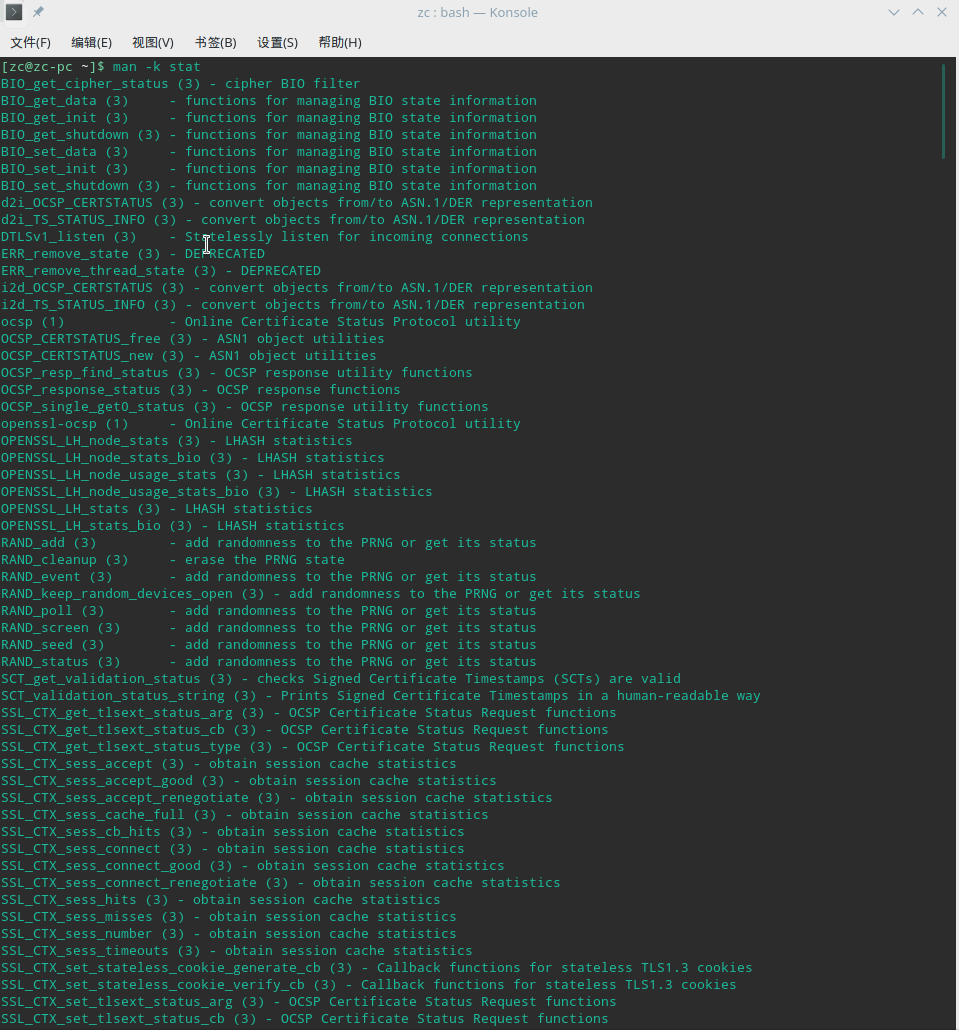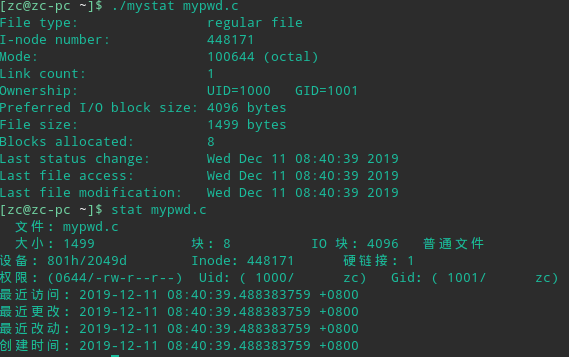#20175201 stat命令的实现-mystate
一 任务详情
学习使用stat(1),并用C语言实现
- 提交学习stat(1)的截图
- man -k ,grep -r的使用
- 伪代码
- 产品代码 mystate.c,提交码云链接
- 测试代码,mystat 与stat(1)对比,提交截图
二
关于stat(1)
stat命令(可参考Linux系统stat指令用法)主要用于显示文件或文件系统的详细信息,该命令的语法格式如下:
-f:不显示文件本身的信息,显示文件所在文件系统的信息
-L:显示符号链接
-t:简洁模式,只显示摘要信息
stat命令显示的是文件的I节点信息。Linux文件系统以块为单位存储信息,为了找到某一个文件所在存储空间的位置,用I节点对每个文件进行索引,I节点包含了描述文件所必要的全部信息,其中包含了文件的大小,类型,存取权限,文件的所有者。
man -k stat
三、实验截图



四、实验代码
#include <sys/types.h>
#include <sys/stat.h>
#include <time.h>
#include <stdio.h>
#include <stdlib.h>
int main(int argc, char *argv[])
{
struct stat sb;
if (argc != 2) {
fprintf(stderr, "Usage: %s <pathname>\n", argv[0]);
exit(EXIT_FAILURE);
}
if (stat(argv[1], &sb) == -1) {
perror("stat");
exit(EXIT_FAILURE);
}
printf("File type: ");
switch (sb.st_mode & S_IFMT) {
case S_IFBLK: printf("block device\n");
break;
case S_IFCHR: printf("character device\n");
break;
case S_IFDIR: printf("directory\n");
break;
case S_IFIFO: printf("FIFO/pipe\n");
break;
case S_IFLNK: printf("symlink\n");
break;
case S_IFREG: printf("regular file\n");
break;
case S_IFSOCK: printf("socket\n");
break;
default: printf("unknown?\n");
break;
}
printf("I-node number: %ld\n", (long) sb.st_ino);
printf("Mode: %lo (octal)\n",(unsigned long) sb.st_mode);
printf("Link count: %ld\n", (long) sb.st_nlink);
printf("Ownership: UID=%ld GID=%ld\n",(long) sb.st_uid, (long) sb.st_gid);
printf("Preferred I/O block size: %ld bytes\n",(long) sb.st_blksize);
printf("File size: %lld bytes\n",(long long) sb.st_size);
printf("Blocks allocated: %lld\n",(long long) sb.st_blocks);
printf("Last status change: %s", ctime(&sb.st_ctime));
printf("Last file access: %s", ctime(&sb.st_atime));
printf("Last file modification: %s", ctime(&sb.st_mtime));
exit(EXIT_SUCCESS);
}













